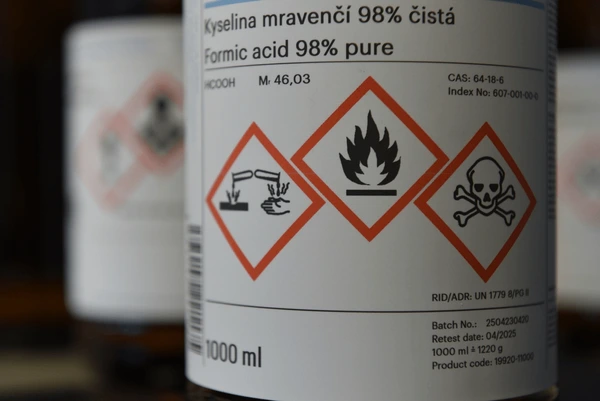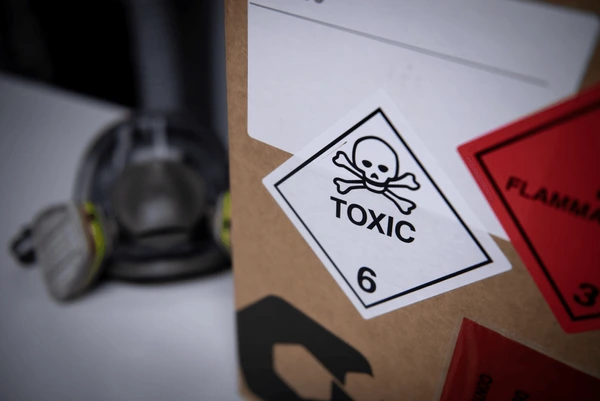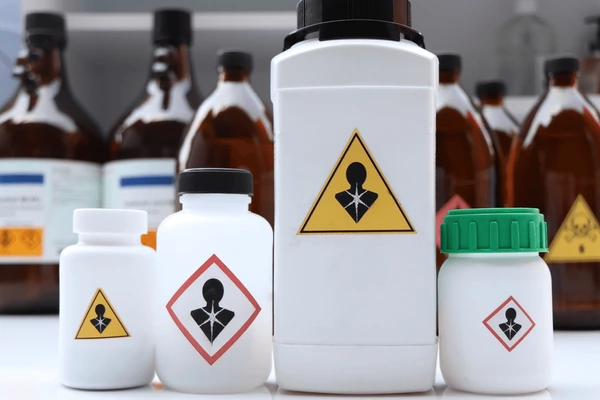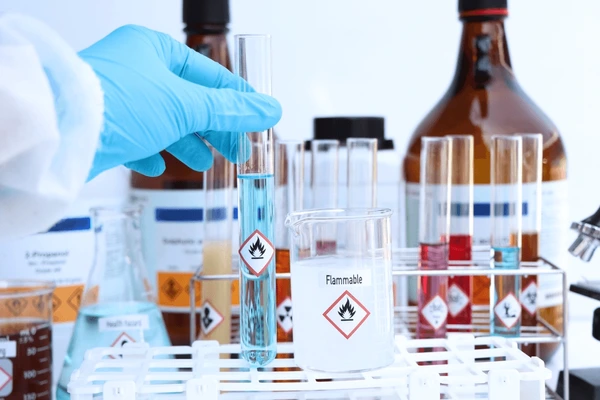In our rapidly industrializing world, recognizing hazard symbols is more than just important; it is essential. Whether you’re working in a laboratory, factory, school, or even using household cleaning products, understanding the meaning of different hazard symbols is crucial for safeguarding your safety and the well-being of those around you.
These pictograms communicate vital safety information quickly and effectively. In this article, we provide a detailed breakdown of the different types of hazard symbols, their meanings, and their significance in various settings, ensuring you’re well-equipped to interpret and react appropriately to any risks.
Introduction to Hazard Symbols
Hazard symbols are standardized graphical icons used to indicate the presence of dangerous substances. These symbols are used globally and are regulated by the Globally Harmonized System of Classification and Labeling of Chemicals (GHS). They help users identify potential dangers such as toxicity, flammability, or corrosiveness at a glance.
Why Hazard Symbols Matter
- Preventing accidents and injuries
- Providing quick visual warnings
- Ensuring legal compliance in workplaces
- Educating individuals on proper handling procedures
Ignoring these warnings can lead to severe health problems, environmental harm, or potentially legal consequences.
Hazard symbols play a crucial role in:
The 9 Official GHS Hazard Symbols and Their Meanings
1. Explosive (Symbol: Exploding Bomb)
This symbol indicates that a substance or mixture can cause explosions when exposed to heat, shock, or friction.
- Examples: Fireworks, ammunition, blasting agents
- Precautions: Keep away from heat and open flames. Handle with extreme care.
2. Flammable (Symbol: Flame)

The flame symbol indicates that the substance can easily ignite when exposed to a spark, flame, or even air.
- Examples: Gasoline, ethanol, propane
- Precautions: Store in cool, well-ventilated areas. Avoid smoking nearby.
3. Oxidizing (Symbol: Flame over Circle)
This indicates that the material releases oxygen, which can intensify a fire or cause other materials to ignite more easily.
- Examples: Hydrogen peroxide, potassium nitrate
- Precautions: Store separately from flammable substances.
4. Gas Under Pressure (Symbol: Gas Cylinder)
Substances stored in pressurized cylinders fall under this category. They can explode if heated or mishandled.
- Examples: Compressed oxygen, carbon dioxide
- Precautions: Avoid dropping cylinders. Secure them properly.
5. Corrosive (Symbol: Corrosion)
This symbol is used for substances that can destroy skin tissue and corrode metals.
- Examples: Sulfuric acid, sodium hydroxide
- Precautions: Wear gloves, goggles, and protective clothing.
6. Toxic (Symbol: Skull and Crossbones)

Indicates materials that are acutely toxic and may cause serious health effects or death if inhaled, ingested, or come into contact with the skin.
- Examples: Pesticides, methanol
- Precautions: Use only in well-ventilated areas with appropriate PPE.
7. Health Hazard (Symbol: Human Silhouette)
Represents substances that may cause chronic health effects, including cancer, respiratory problems, or organ damage.
- Examples: Asbestos, benzene
- Precautions: Regular health monitoring and proper PPE use are essential.
8. Irritant/Harmful (Symbol: Exclamation Mark)
This symbol warns about substances that may cause skin irritation, eye irritation, or allergic reactions.
- Examples: Detergents, bleach
- Precautions: Avoid contact with skin and eyes. Rinse thoroughly if exposed.
9. Environmental Hazard (Symbol: Dead Fish and Tree)
Indicates chemicals that pose a danger to aquatic life and the environment.
- Examples: Mercury compounds, certain herbicides
- Precautions: Never dispose of in sinks or drains. Follow local disposal guidelines.
Where Are Hazard Symbols Found?
Hazard symbols are widely used across various settings, including:
- Chemical containers
- Safety Data Sheets (SDS)
- Workplace signage
- Laboratories and schools
- Transport containers and vehicles
They must be clearly visible, intact, and unobstructed for effective communication of risk.
Regulations Governing Hazard Symbols
Globally Harmonized System (GHS)
The GHS, developed by the United Nations, ensures that information about chemical hazards is standardized across the world. It mandates uniform labels, pictograms, and hazard statements.
Occupational Safety and Health Administration (OSHA)
In the U.S., OSHA aligns with GHS regulations to safeguard workers. The Hazard Communication Standard (HCS) outlines the responsibilities of employers in hazard communication.
European Union CLP Regulation
The Classification, Labelling and Packaging (CLP) regulation aligns the EU’s chemical classification system with GHS. It requires that all hazardous chemicals carry standardized labels and safety data sheets.
Best Practices for Handling Hazardous Materials
- Always read the label before using any chemical.
- Wear appropriate PPE such as gloves, goggles, and lab coats.
- Know your symbols: Proper training is essential.
- Store chemicals properly according to their classification.
- Have an emergency plan: Know what to do in case of spills, exposure, or fire.
Teaching and Learning Hazard Symbols

Educational institutions, workplaces, and colleges are essential in promoting awareness about chemical safety. They should:
- Integrate hazard symbol education into training programs
- Use visual aids and real-life examples
- Regularly assess understanding through quizzes and practical demonstrations
Modern Enhancements in Hazard Communication
With technological advancements, hazard symbols are now incorporated into:
- Digital inventory systems
- QR codes linking to SDSs
- Augmented reality safety training
These innovations make hazard communication more interactive and efficient.
Conclusion: Safety Starts with Awareness
Understanding hazard symbols is the cornerstone of chemical safety. These icons are not mere labels, they are critical warnings that protect health, life, and the environment. Whether you’re a student, a scientist, or an everyday consumer, recognizing and respecting these symbols can prevent disasters and ensure a safer world for everyone.
What Are Hazard Symbols?
In our rapidly industrializing world, recognizing hazard symbols is more than just important; it is essential. Whether you’re working in a laboratory, factory, school, or even using household cleaning products, understanding the meaning of different hazard symbols is crucial for safeguarding your safety and the well-being of those around you.
These pictograms communicate vital safety information quickly and effectively. In this article, we provide a detailed breakdown of the different types of hazard symbols, their meanings, and their significance in various settings, ensuring you’re well-equipped to interpret and react appropriately to any risks.
Hazard symbols are standardized graphical icons used to indicate the presence of dangerous substances. These symbols are used globally and are regulated by the Globally Harmonized System of Classification and Labeling of Chemicals (GHS). They help users identify potential dangers such as toxicity, flammability, or corrosiveness at a glance.
Why Hazard Symbols Matter
Preventing accidents and injuries
Providing quick visual warnings
Ensuring legal compliance in workplaces
Educating individuals on proper handling procedures
Ignoring these warnings can lead to severe health problems, environmental harm, or potentially legal consequences.
Hazard symbols play a crucial role in:
The 9 Official GHS Hazard Symbols and Their Meanings
1. Explosive (Symbol: Exploding Bomb)
This symbol indicates that a substance or mixture can cause explosions when exposed to heat, shock, or friction.
Examples: Fireworks, ammunition, blasting agents
Precautions: Keep away from heat and open flames. Handle with extreme care.
2. Flammable (Symbol: Flame)
The flame symbol indicates that the substance can easily ignite when exposed to a spark, flame, or even air.
Examples: Gasoline, ethanol, propane
Precautions: Store in cool, well-ventilated areas. Avoid smoking nearby.
3. Oxidizing (Symbol: Flame over Circle)
This indicates that the material releases oxygen, which can intensify a fire or cause other materials to ignite more easily.
Examples: Hydrogen peroxide, potassium nitrate
Precautions: Store separately from flammable substances.
4. Gas Under Pressure (Symbol: Gas Cylinder)
Substances stored in pressurized cylinders fall under this category. They can explode if heated or mishandled.
Examples: Compressed oxygen, carbon dioxide
Precautions: Avoid dropping cylinders. Secure them properly.
5. Corrosive (Symbol: Corrosion)
This symbol is used for substances that can destroy skin tissue and corrode metals.
Examples: Sulfuric acid, sodium hydroxide
Precautions: Wear gloves, goggles, and protective clothing.
6. Toxic (Symbol: Skull and Crossbones)
Indicates materials that are acutely toxic and may cause serious health effects or death if inhaled, ingested, or come into contact with the skin.
Examples: Pesticides, methanol
Precautions: Use only in well-ventilated areas with appropriate PPE.
7. Health Hazard (Symbol: Human Silhouette)
Represents substances that may cause chronic health effects, including cancer, respiratory problems, or organ damage.
Examples: Asbestos, benzene
Precautions: Regular health monitoring and proper PPE use are essential.
8. Irritant/Harmful (Symbol: Exclamation Mark)
This symbol warns about substances that may cause skin irritation, eye irritation, or allergic reactions.
Examples: Detergents, bleach
Precautions: Avoid contact with skin and eyes. Rinse thoroughly if exposed.
9. Environmental Hazard (Symbol: Dead Fish and Tree)
Indicates chemicals that pose a danger to aquatic life and the environment.
Examples: Mercury compounds, certain herbicides
Precautions: Never dispose of in sinks or drains. Follow local disposal guidelines.
Where Are Hazard Symbols Found?
Hazard symbols are widely used across various settings, including:
Chemical containers
Safety Data Sheets (SDS)
Workplace signage
Laboratories and schools
Transport containers and vehicles
They must be clearly visible, intact, and unobstructed for effective communication of risk.
Regulations Governing Hazard Symbols
Globally Harmonized System (GHS)
The GHS, developed by the United Nations, ensures that information about chemical hazards is standardized across the world. It mandates uniform labels, pictograms, and hazard statements.
Occupational Safety and Health Administration (OSHA)
In the U.S., OSHA aligns with GHS regulations to safeguard workers. The Hazard Communication Standard (HCS) outlines the responsibilities of employers in hazard communication.
European Union CLP Regulation
The Classification, Labelling and Packaging (CLP) regulation aligns the EU’s chemical classification system with GHS. It requires that all hazardous chemicals carry standardized labels and safety data sheets.
Best Practices for Handling Hazardous Materials
Always read the label before using any chemical.
Wear appropriate PPE such as gloves, goggles, and lab coats.
Know your symbols: Proper training is essential.
Store chemicals properly according to their classification.
Have an emergency plan: Know what to do in case of spills, exposure, or fire.
Teaching and Learning Hazard Symbols
Educational institutions, workplaces, and colleges are essential in promoting awareness about chemical safety. They should:
Integrate hazard symbol education into training programs
Use visual aids and real-life examples
Regularly assess understanding through quizzes and practical demonstrations
Modern Enhancements in Hazard Communication
With technological advancements, hazard symbols are now incorporated into:
Digital inventory systems
QR codes linking to SDSs
Augmented reality safety training
These innovations make hazard communication more interactive and efficient.
Conclusion: Safety Starts with Awareness
Understanding hazard symbols is the cornerstone of chemical safety. These icons are not mere labels, they are critical warnings that protect health, life, and the environment. Whether you’re a student, a scientist, or an everyday consumer, recognizing and respecting these symbols can prevent disasters and ensure a safer world for everyone.
What does the hazard symbol mean?
In our rapidly industrializing world, recognizing hazard symbols is more than just important; it is essential. Whether you’re working in a laboratory, factory, school, or even using household cleaning products, understanding the meaning of different hazard symbols is crucial for safeguarding your safety and the well-being of those around you.
These pictograms communicate vital safety information quickly and effectively. In this article, we provide a detailed breakdown of the different types of hazard symbols, their meanings, and their significance in various settings, ensuring you’re well-equipped to interpret and react appropriately to any risks.
Hazard symbols are standardized graphical icons used to indicate the presence of dangerous substances. These symbols are used globally and are regulated by the Globally Harmonized System of Classification and Labeling of Chemicals (GHS). They help users identify potential dangers such as toxicity, flammability, or corrosiveness at a glance.
Why Hazard Symbols Matter
Preventing accidents and injuries
Providing quick visual warnings
Ensuring legal compliance in workplaces
Educating individuals on proper handling procedures
Ignoring these warnings can lead to severe health problems, environmental harm, or potentially legal consequences.
Hazard symbols play a crucial role in:
The 9 Official GHS Hazard Symbols and Their Meanings
1. Explosive (Symbol: Exploding Bomb)
This symbol indicates that a substance or mixture can cause explosions when exposed to heat, shock, or friction.
Examples: Fireworks, ammunition, blasting agents
Precautions: Keep away from heat and open flames. Handle with extreme care.
2. Flammable (Symbol: Flame)
The flame symbol indicates that the substance can easily ignite when exposed to a spark, flame, or even air.
Examples: Gasoline, ethanol, propane
Precautions: Store in cool, well-ventilated areas. Avoid smoking nearby.
3. Oxidizing (Symbol: Flame over Circle)
This indicates that the material releases oxygen, which can intensify a fire or cause other materials to ignite more easily.
Examples: Hydrogen peroxide, potassium nitrate
Precautions: Store separately from flammable substances.
4. Gas Under Pressure (Symbol: Gas Cylinder)
Substances stored in pressurized cylinders fall under this category. They can explode if heated or mishandled.
Examples: Compressed oxygen, carbon dioxide
Precautions: Avoid dropping cylinders. Secure them properly.
5. Corrosive (Symbol: Corrosion)
This symbol is used for substances that can destroy skin tissue and corrode metals.
Examples: Sulfuric acid, sodium hydroxide
Precautions: Wear gloves, goggles, and protective clothing.
6. Toxic (Symbol: Skull and Crossbones)
Indicates materials that are acutely toxic and may cause serious health effects or death if inhaled, ingested, or come into contact with the skin.
Examples: Pesticides, methanol
Precautions: Use only in well-ventilated areas with appropriate PPE.
7. Health Hazard (Symbol: Human Silhouette)
Represents substances that may cause chronic health effects, including cancer, respiratory problems, or organ damage.
Examples: Asbestos, benzene
Precautions: Regular health monitoring and proper PPE use are essential.
8. Irritant/Harmful (Symbol: Exclamation Mark)
This symbol warns about substances that may cause skin irritation, eye irritation, or allergic reactions.
Examples: Detergents, bleach
Precautions: Avoid contact with skin and eyes. Rinse thoroughly if exposed.
9. Environmental Hazard (Symbol: Dead Fish and Tree)
Indicates chemicals that pose a danger to aquatic life and the environment.
Examples: Mercury compounds, certain herbicides
Precautions: Never dispose of in sinks or drains. Follow local disposal guidelines.
Where Are Hazard Symbols Found?
Hazard symbols are widely used across various settings, including:
Chemical containers
Safety Data Sheets (SDS)
Workplace signage
Laboratories and schools
Transport containers and vehicles
They must be clearly visible, intact, and unobstructed for effective communication of risk.
Regulations Governing Hazard Symbols
Globally Harmonized System (GHS)
The GHS, developed by the United Nations, ensures that information about chemical hazards is standardized across the world. It mandates uniform labels, pictograms, and hazard statements.
Occupational Safety and Health Administration (OSHA)
In the U.S., OSHA aligns with GHS regulations to safeguard workers. The Hazard Communication Standard (HCS) outlines the responsibilities of employers in hazard communication.
European Union CLP Regulation
The Classification, Labelling and Packaging (CLP) regulation aligns the EU’s chemical classification system with GHS. It requires that all hazardous chemicals carry standardized labels and safety data sheets.
Best Practices for Handling Hazardous Materials
Always read the label before using any chemical.
Wear appropriate PPE such as gloves, goggles, and lab coats.
Know your symbols: Proper training is essential.
Store chemicals properly according to their classification.
Have an emergency plan: Know what to do in case of spills, exposure, or fire.
Teaching and Learning Hazard Symbols
Educational institutions, workplaces, and colleges are essential in promoting awareness about chemical safety. They should:
Integrate hazard symbol education into training programs
Use visual aids and real-life examples
Regularly assess understanding through quizzes and practical demonstrations
Modern Enhancements in Hazard Communication
With technological advancements, hazard symbols are now incorporated into:
Digital inventory systems
QR codes linking to SDSs
Augmented reality safety training
These innovations make hazard communication more interactive and efficient.
Conclusion: Safety Starts with Awareness
Understanding hazard symbols is the cornerstone of chemical safety. These icons are not mere labels, they are critical warnings that protect health, life, and the environment. Whether you’re a student, a scientist, or an everyday consumer, recognizing and respecting these symbols can prevent disasters and ensure a safer world for everyone.
What are the symbols of hazard?
This symbol indicates that a substance or mixture can cause explosions when exposed to heat, shock, or friction.
Examples: Fireworks, ammunition, blasting agents
Precautions: Keep away from heat and open flames. Handle with extreme care.
2. Flammable (Symbol: Flame)
The flame symbol indicates that the substance can easily ignite when exposed to a spark, flame, or even air.
Examples: Gasoline, ethanol, propane
Precautions: Store in cool, well-ventilated areas. Avoid smoking nearby.
3. Oxidizing (Symbol: Flame over Circle)
This indicates that the material releases oxygen, which can intensify a fire or cause other materials to ignite more easily.
Examples: Hydrogen peroxide, potassium nitrate
Precautions: Store separately from flammable substances.
4. Gas Under Pressure (Symbol: Gas Cylinder)
Substances stored in pressurized cylinders fall under this category. They can explode if heated or mishandled.
Examples: Compressed oxygen, carbon dioxide
Precautions: Avoid dropping cylinders. Secure them properly.
5. Corrosive (Symbol: Corrosion)
This symbol is used for substances that can destroy skin tissue and corrode metals.
Examples: Sulfuric acid, sodium hydroxide
Precautions: Wear gloves, goggles, and protective clothing.
6. Toxic (Symbol: Skull and Crossbones)
Indicates materials that are acutely toxic and may cause serious health effects or death if inhaled, ingested, or come into contact with the skin.
Examples: Pesticides, methanol
Precautions: Use only in well-ventilated areas with appropriate PPE.
7. Health Hazard (Symbol: Human Silhouette)
Represents substances that may cause chronic health effects, including cancer, respiratory problems, or organ damage.
Examples: Asbestos, benzene
Precautions: Regular health monitoring and proper PPE use are essential.
8. Irritant/Harmful (Symbol: Exclamation Mark)
This symbol warns about substances that may cause skin irritation, eye irritation, or allergic reactions.
Examples: Detergents, bleach
Precautions: Avoid contact with skin and eyes. Rinse thoroughly if exposed.
9. Environmental Hazard (Symbol: Dead Fish and Tree)
Indicates chemicals that pose a danger to aquatic life and the environment.
Examples: Mercury compounds, certain herbicides
Precautions: Never dispose of in sinks or drains. Follow local disposal guidelines.
Where Are Hazard Symbols Found?
Hazard symbols are widely used across various settings, including:
Chemical containers
Safety Data Sheets (SDS)
Workplace signage
Laboratories and schools
Transport containers and vehicles
They must be clearly visible, intact, and unobstructed for effective communication of risk.

It is the best time to make a few plans for the long run and it is time
to be happy. I’ve read this post and if I could I wish to counsel you few fascinating issues or suggestions.
Perhaps you could write subsequent articles regarding this article.
I desire to read more things about it!